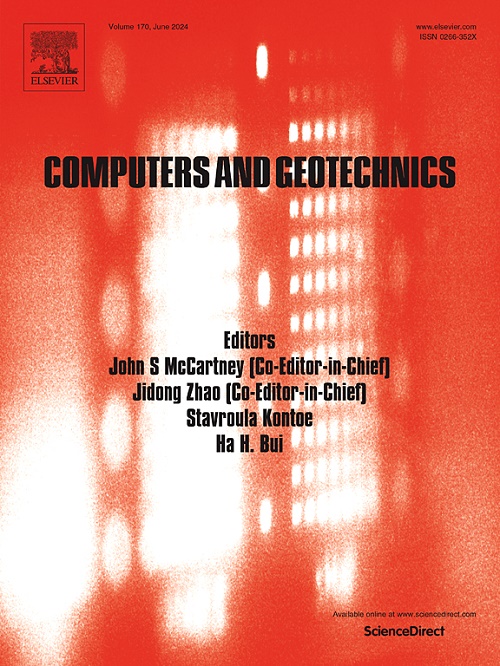A dynamic p-y + M-θ model for monopile in soft clay considering failure mechanism under combined actions of wind and earthquake
IF 5.3
1区 工程技术
Q1 COMPUTER SCIENCE, INTERDISCIPLINARY APPLICATIONS
引用次数: 0
Abstract
The increasing turbine sizes have necessitated monopile in soft clay to have larger diameter and rigidity, from early design of flexible piles to recent semi-rigid piles, with a future outlook on rigid piles. Existing failure mechanism-based soil-pile interaction model, i.e. p-y + M-θ model, is specifically developed for monopiles under lateral wind loading in non-seismic areas. To date, there is still a lack of failure mechanism-based p-y + M-θ model considering the combined actions of wind loading and seismic loading that is transmitted upward from the pile toe. This study aims to (a) reveal the failure mechanisms of monopile with varying rigidity under combined wind and seismic loading, and (b) to develop a dynamic p-y + M-θ model in accordance with these mechanisms. The first objective is achieved through a series of 3D finite element analyses well-calibrated by centrifuge model tests, which reveal a new mechanism (i.e., translation-shear failure) introduced by seismic loading, as an addition to the three-zone failure mechanism typically observed for a pile solely under wind loading. A dynamic p-y + M-θ model is then developed in light of these failure mechanisms associated with both wind and seismic loadings, with hysteretic damping and frequency-dependent radiation damping specifically introduced to enable dynamic analyses. The new model is validated against numerical analyses on piles subjected to seismic and wind loadings. Compared to the authors’ original p-y + M-θ model, the newly proposed model can better describe dynamic soil-pile interaction in seismically active areas, as it poses two additional simulation capabilities: (a) amplified lateral pile displacement due to the translation-shear failure caused by the seismic movement of whole pile embedment; (b) suppressed structural response due to the radiation damping aroused from the high-frequency seismic movement.

求助全文
约1分钟内获得全文
求助全文
来源期刊

Computers and Geotechnics
地学-地球科学综合
CiteScore
9.10
自引率
15.10%
发文量
438
审稿时长
45 days
期刊介绍:
The use of computers is firmly established in geotechnical engineering and continues to grow rapidly in both engineering practice and academe. The development of advanced numerical techniques and constitutive modeling, in conjunction with rapid developments in computer hardware, enables problems to be tackled that were unthinkable even a few years ago. Computers and Geotechnics provides an up-to-date reference for engineers and researchers engaged in computer aided analysis and research in geotechnical engineering. The journal is intended for an expeditious dissemination of advanced computer applications across a broad range of geotechnical topics. Contributions on advances in numerical algorithms, computer implementation of new constitutive models and probabilistic methods are especially encouraged.
 求助内容:
求助内容: 应助结果提醒方式:
应助结果提醒方式:


